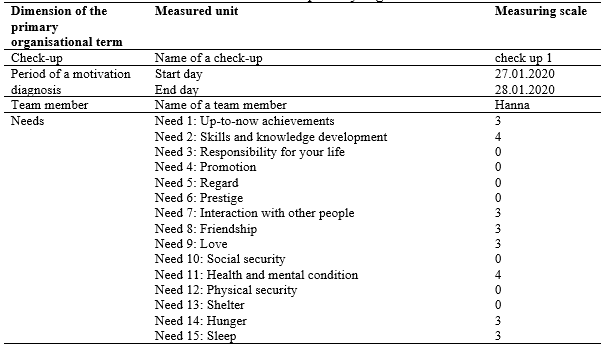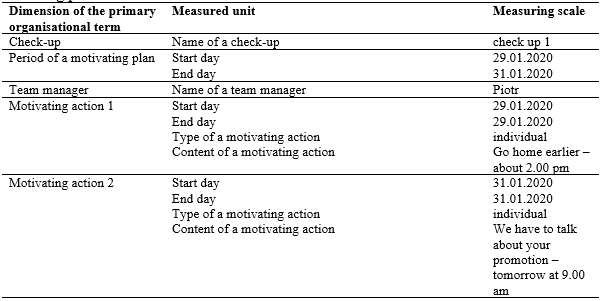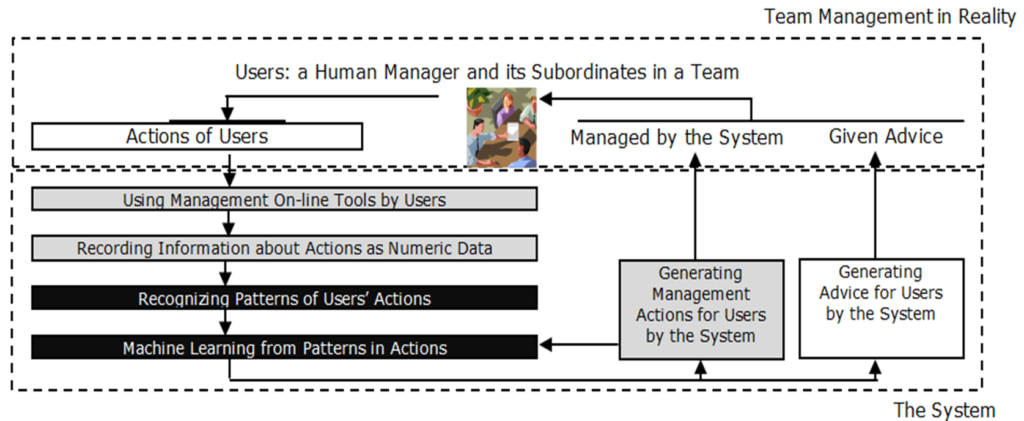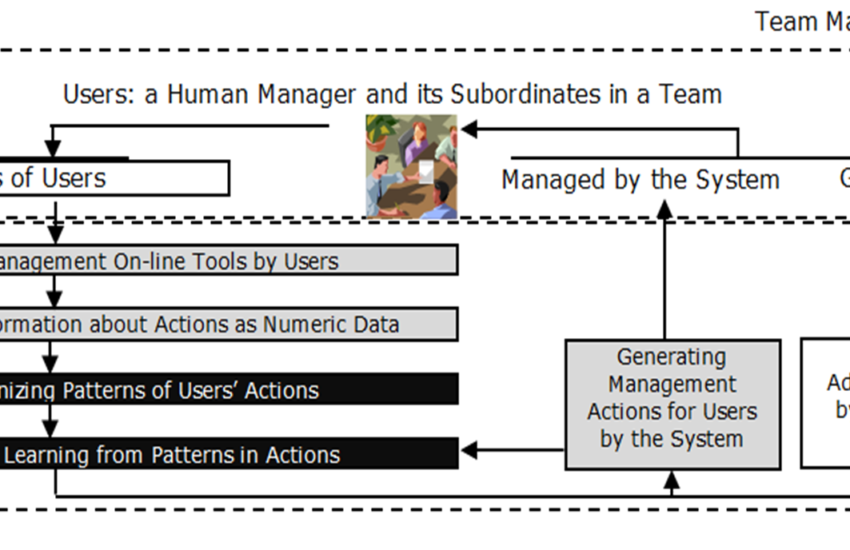Today is the third part of the description of my mobile application, which I designed together with Dr. Adrian Pyszka, and was programmed by engineer Rafal Ujma. Let me remind you that the application is about the managerial activity of motivating employees. We designed the application based on the system of organizational terms, so that it could record people’s activities and so that they could be automated later.
We tested the application among students and employees of the University of Silesia in Katowice. Several teams took part in the testing. As an example, I will show the student team, in which Piotr was the manager and Hanna was one of the team members. Piotr, the manager, set the parameters for when the “check-up” was to take place, i.e. the survey of motivation and then the planning of motivational activities. He asked employees to rate their work motivation. Hanna rated her motivation as I have shown in Figure 1. Hanna rated the satisfaction of her needs from 0 to 5, where 0 was an unmet need and 5 was a fully satisfied need. In Figure 1, you can see the parameters of the primary organizational term, which is “motivation.”

Figure 1. Team Motivator survey of team worker needs
Manager Peter, knowing the level of satisfaction of Hanna’s needs, i.e. her motivation to work, planned motivational activities, which I show in Figure 2. These are both parameters of the primary organizational term of “motivation plan”.

Figure 2. Team Motivator’s incentive plan for a team member
Next, Peter’s manager set up another “check-up,” that is, he reexamined his employees’ motivation, and then again planned motivational activities for them. And so on.
The Team Motivator app recorded every click on the smartphone screen so that the power would then mimic that manager if, for example, he went on vacation. This enabled the sequence of actions to automate the manager’s work, which can be seen in Figure 3.

Figure 3. Sequence of steps leading to the automation of a manager’s job
In this way, a robot manager can motivate his employees by learning from a human manager. For more on the Team Motivator application, read:

